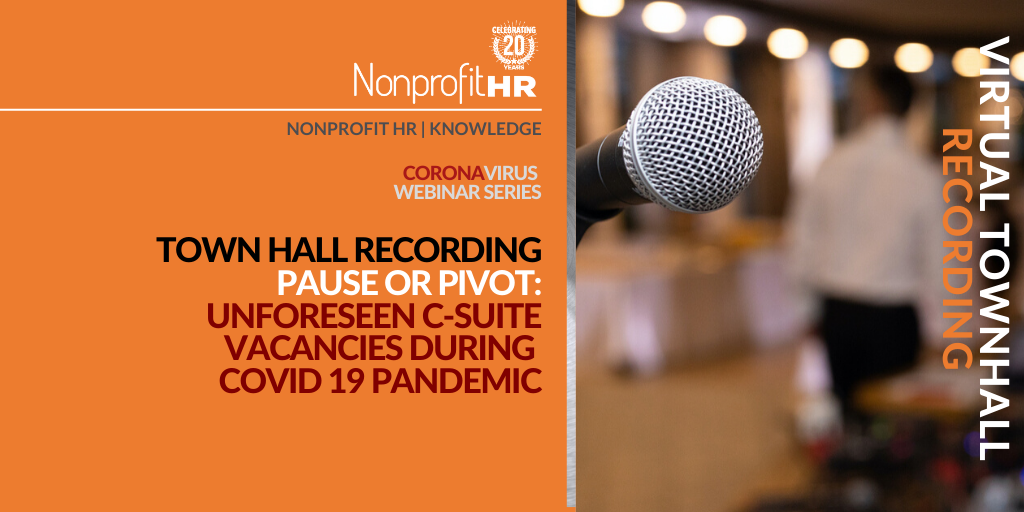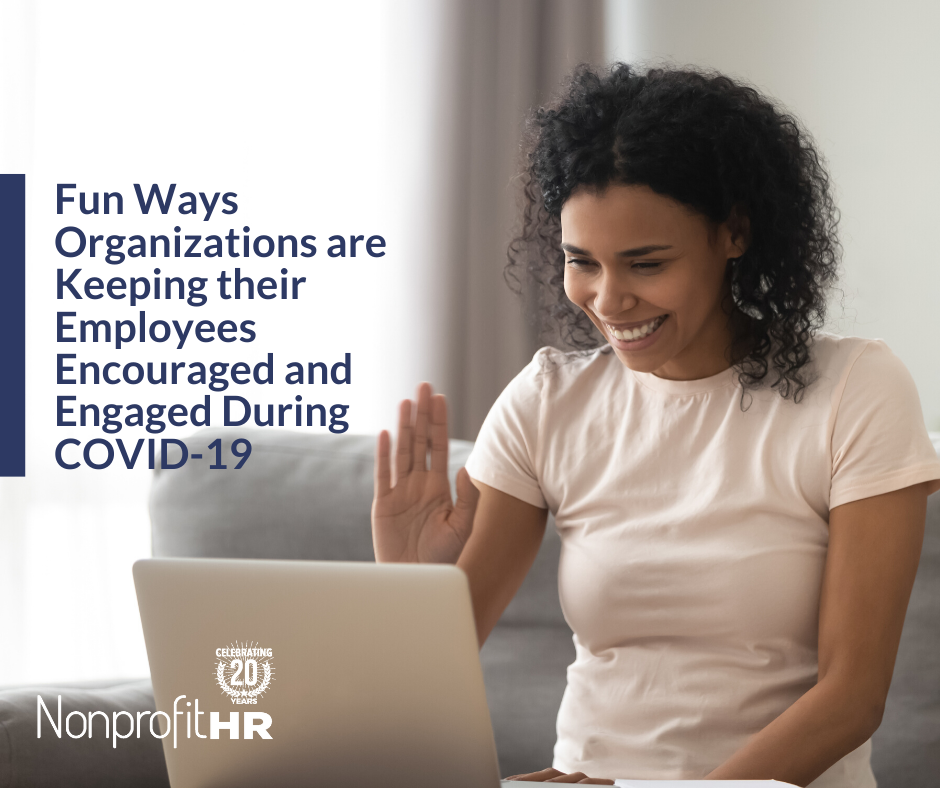WTOP: 5 ways nonprofits can…
Virtually overnight the landscape of the global workforce has changed, and likely for the foreseeable future. While this means different things for each organization, we can all agree that the COVID-19 recovery timeline is front-of-mind for all leaders. Every organization will have to plan for their workforce post-COVID-19, but the organization dealing with the untimely departure of a c-suite executive has a much heavier lift. With thoughtful consideration for the current and desired future state of the organization, however, the board of directors has a unique opportunity to redirect and ensure mission sustainability. Interim executive leadership is a valuable resource that gives an organization time to reflect on the past, correct structural inefficiencies, and prepare for the visionary work of a long-term leader.
As your organization looks ahead to a potentially uncertain future, hiring for executive leadership vacancies will become top priority as the board of directors works toward solidifying a “new normal”. This is a key decision point for the board. It is also the perfect time to use interim leadership to become laser focused on operations and the fiscal health of the organization as the long-term executive leadership needs will likely evolve through the crisis and beyond.
Effective interim leadership can also aide in the success of a future permanent executive search. The best interim leaders are experts in finance, operations, human resources, technology, and change management. They also have a singular goal – to fix whatever is broken. This is the kind of leader that will prepare an organization for the success of a long-term incumbent.
 Access more information and tips on this topic! Download and watch this Town Hall recording.
Access more information and tips on this topic! Download and watch this Town Hall recording.
When selecting an interim leader, a board of directors must think a bit differently than when making a long-term hire. It is important to take advantage of the consultative nature of the relationship and lean heavily on the expertise of your interim leader. Always remember: you are the expert on your mission and this executive is the expert at organizational transition and recovery, use them. There are numerous benefits of interim. We have identified some of the most significant below to serve as a guide as you navigate your immediate decisions around executive talent.
- Diverse Knowledge Stemming from Broad Experience: Probably the most tangible benefit of interim leadership is the diversity of experience of each executive. The average tenure of a nonprofit CEO or Executive Director is six years. An interim executive will engage between two and three clients in a year’s time, exponentially increasing their experience with real world issues, and the likelihood that they have proven solutions for the issues facing your organization.
- Insights from Needs Assessment: Interim leaders will immediately conduct a thorough needs assessment to determine the structural and fiscal health of the organization and its operations. This is a golden opportunity to identify challenges within the organization and course correct. Your interim leader will use their findings to make recommendations for how to best utilize their expertise during your engagement. Setting the scope and terms of the engagement should be a collaborative effort with the board, informed by the content of the assessment.
- Board and Staff Development: Ignoring the impact of a sudden leadership departure on culture and the people functions of an organization, is a recipe for disaster. While an interim leader will be more focused on organizational structure and operations, they also do valuable work around board and staff development. Invariably pulling from their broad experience in workforce planning, training and development, executive leaders are adept at galvanizing teams around the mission and strategic goals.
- The Luxury of “Focus”: A permanent executive is responsible for short- and long-range goal setting, as well as programmatic focus and mission alignment. No matter what structural issues arise, a permanent leader must also keep all other wheels in motion. By utilizing an interim leader, an organization benefits from the isolated focus of an executive on a defined set of problems. An opportunity that might not soon come around again.
- Accountability and Transparency: Going “nose blind” to challenges we have learned to live with is often a point of contention when an interim leader comes onboard. Practices that have been adapted to account for a lack of resources, time, or capacity generally become a part of an organization’s day to day, in the same way the traditional best practices do. People become invested in their systems and overly protective of their way of doing things. An interim leader will come in and shine light on these inefficiencies and hold teams accountable for developing and maintaining systems and procedures to support strategic goals.
- Message to Stakeholders: No matter the severity of challenges an organization is facing, all stakeholders want to see the same thing – some tangible sign of a commitment to change, and an investment in securing the future of the mission. Engaging a strong interim leader shows your stakeholders two things: (1) we know that we have a problem; and (2) we’re committed to fixing it. An even more valuable bi-product of this scenario is a staff and community of stakeholders who are invested in these solutions; paving the way for a successful and long-lasting tenure for your permanent executive.
A time of crisis and uncertainty is not a license for inaction. However, it is prudent to explore all available solutions and decide what is best for the future of your organization’s mission. While uncertainty does not excuse inaction, but it might not be the time for permanent and long reaching decisions either. Whether managing your organization through a crisis, addressing leadership needs after an untimely departure or making the decision to refresh leadership in light of changing business needs, an interim leader may be the answer. Even if you cannot see through the challenges to the future, you still have a responsibility to make plans for what you can see today.





























